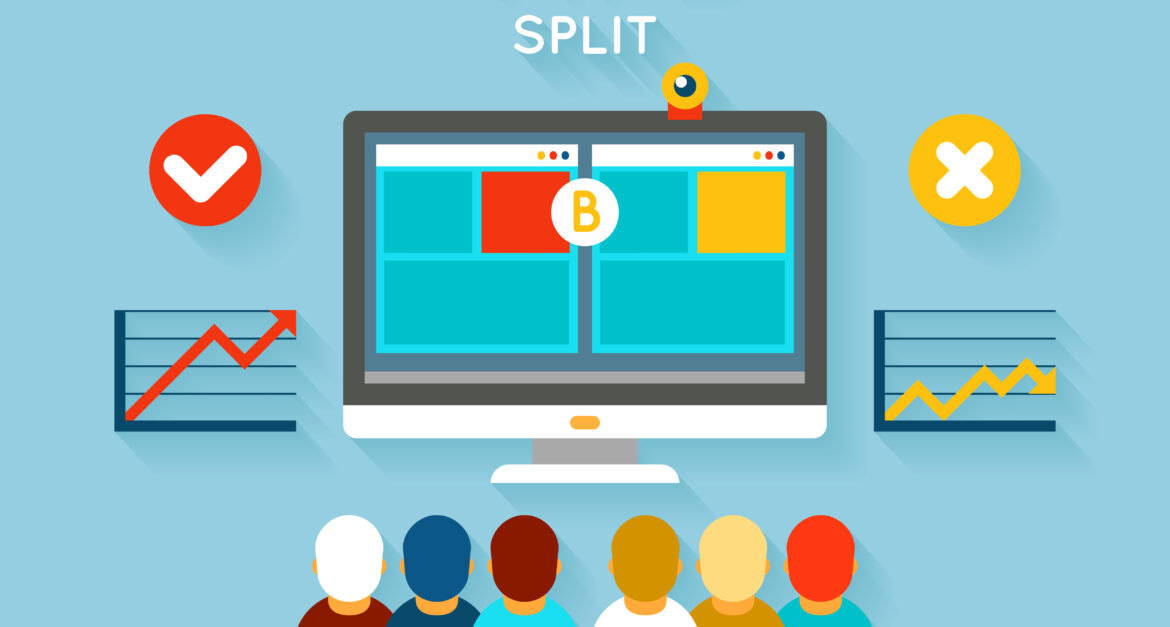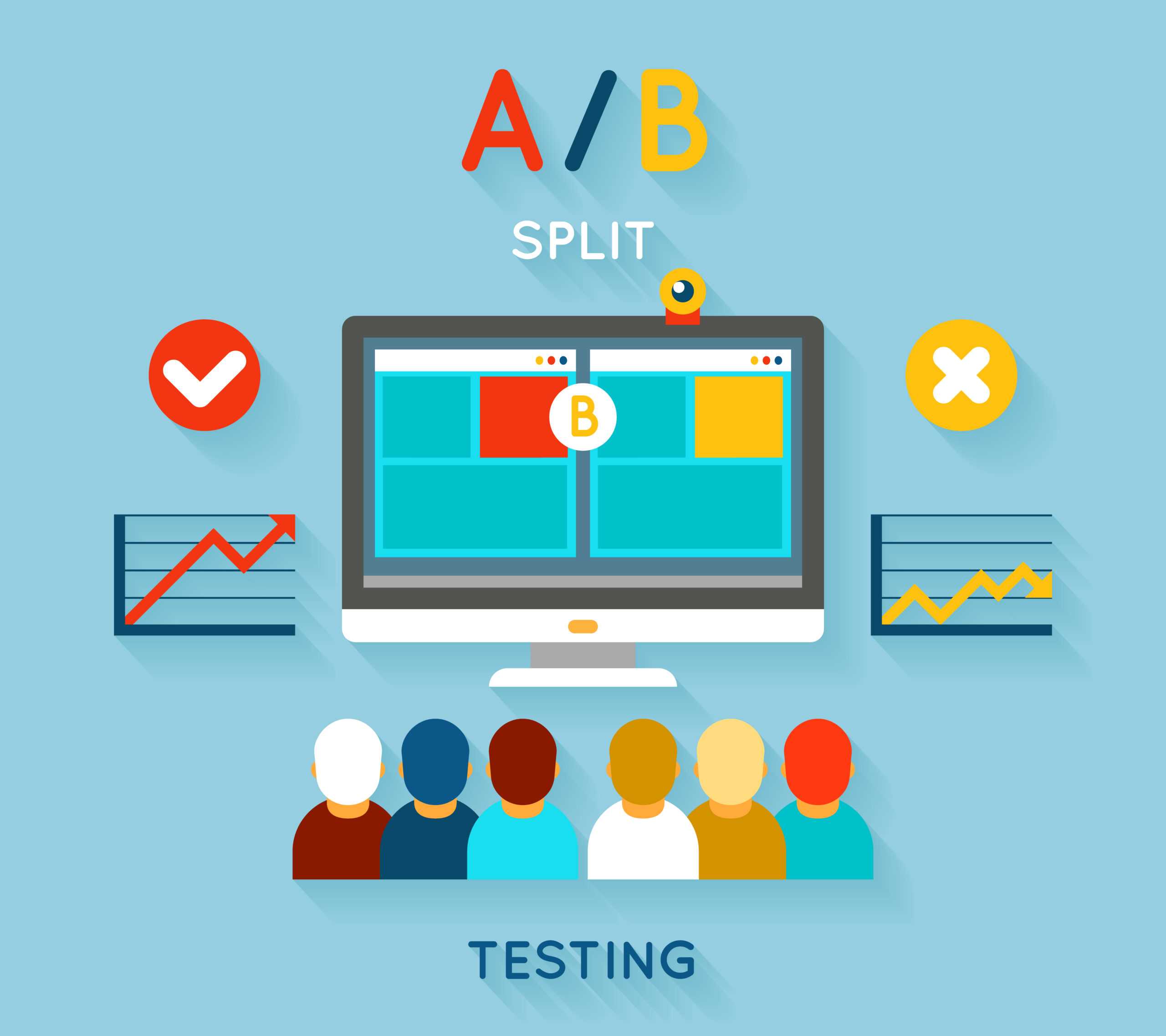
A/B testing, also known as split testing, is a powerful experiment-driven approach used by marketers, product teams, and data scientists to make informed decisions. It helps businesses compare two or more variations to see which one performs better in achieving a specific goal. Whether it’s an email subject line, a landing page design, or even the color of a call-to-action button, A/B testing offers a scientific way to boost conversions and understand what resonates best with audiences.
In this blog, we’ll dive deep into A/B testing, its benefits, the process of running effective tests, and tips for success.
What is A/B Testing?
A/B testing is the process of comparing two versions (Version A and Version B) of a single variable to determine which one is more effective. This is done by randomly showing different versions to users and measuring their responses or behaviors. For instance, let’s say you’re testing two versions of a headline on your website. One version may say, “Buy Now and Save 20%” (Version A), while the other says, “Get 20% Off – Limited Time!” (Version B). An A/B test will help you identify which headline leads to more clicks or conversions.
The variations being tested can range from minor tweaks, like colors or fonts, to more significant changes, like the page layout or product pricing.

Why is A/B Testing Important?
- Data-Driven Decisions: A/B testing eliminates guesswork by providing concrete data on what works best.
- Increased Conversion Rates: Testing different elements allows you to find the most effective variations that drive users to act.
- Enhanced User Experience: By identifying what users prefer, A/B testing helps tailor experiences that engage users effectively.
- Reduced Risks: Instead of making broad changes, A/B testing allows you to roll out changes gradually, minimizing any adverse effects on user engagement.
- Continuous Improvement: Regular testing encourages a culture of constant optimization, leading to long-term growth.
The A/B Testing Process
Let’s break down the steps of conducting an effective A/B test:
1. Identify the Objective
Before setting up your test, establish a clear goal. Are you looking to increase click-through rates on a call-to-action button? Or maybe improve the average order value on a checkout page? Defining this objective will help you focus on what you’re testing for and measure its effectiveness.
2. Develop a Hypothesis
Once you know your goal, create a hypothesis. For example, if you think a larger, more prominent button might encourage more clicks, your hypothesis might be: “If we increase the size of the button, users will be more likely to click it.” A good hypothesis includes a specific change and a clear prediction.
3. Choose a Metric to Measure Success
Select the metric that aligns with your objective. For a click-through rate, this could be the number of clicks. For a landing page, it could be the conversion rate. Ensuring you have the right metric will make it easier to measure and interpret results.
4. Create Your Variations
Develop the different versions to test. For example, if you’re testing a button’s color, create a blue button (Version A) and a red button (Version B). Keep the rest of the page the same to ensure accurate results.
5. Split Your Audience
Randomly divide your audience into groups to see each variation. This ensures that each version is exposed to a similar demographic and provides a fair comparison.
6. Run the Test
Let the test run for a statistically significant amount of time. Prematurely ending a test may lead to inaccurate results, as short tests can be affected by time-sensitive events, trends, or random fluctuations.
7. Analyze the Results
Review the performance data for each version. Use a statistical significance calculator or A/B testing tool to ensure that the observed differences are meaningful and not due to random chance.
8. Implement the Winning Variation
If one variation clearly performs better, consider implementing it as the new standard. Document the insights from the test and use them for future testing ideas.
Common A/B Testing Mistakes to Avoid
1. Running Tests Without Clear Goals
Testing without a clear objective can lead to data overload with no actionable insights. Always establish a hypothesis and specific outcome metrics.
2. Making Too Many Changes
Testing too many elements simultaneously (multivariate testing) can complicate analysis. For true A/B testing, stick to one variable at a time.
3. Ignoring Statistical Significance
Results can be misleading if you don’t wait until they are statistically significant. Allow enough time for results to stabilize before drawing conclusions.
4. Ending Tests Too Early
A premature end can lead to unreliable insights. For best results, wait until you have enough data points based on your website’s traffic volume and test type.
5. Not Testing Regularly
Markets, trends, and user behaviors change. Regular A/B testing allows you to stay updated with these shifts and continue optimizing performance.
A/B Testing Tools to Get Started
Here are a few popular tools to consider:
- Google Optimize: Free and integrated with Google Analytics, making it a solid starting point.
- Optimizely: Known for its user-friendly interface and robust analytics.
- VWO (Visual Website Optimizer): Offers tools for A/B testing, heatmaps, and session recordings.
- Adobe Target: Suitable for advanced users looking for in-depth personalization.
Each of these tools varies in pricing and complexity, so choose the one that fits your team’s needs and resources.
Examples of Successful A/B Testing
- Airbnb: Through extensive A/B testing, Airbnb found that personalized property suggestions improved user engagement on their homepage.
- Booking.com: Booking.com is known for its A/B testing culture and has optimized elements like search bars, booking buttons, and messaging, leading to higher conversions.
- Netflix: From thumbnails to recommendation algorithms, Netflix frequently runs A/B tests to ensure the content presentation drives user interest and engagement.
Tips for Effective A/B Testing
- Use Segmentation: Consider testing variations for different audience segments to better understand their preferences.
- Optimize Timing: Some elements (like email subject lines) may yield different results at different times, so factor in timing when analyzing results.
- Document Results: Keep a record of each test, including the hypothesis, results, and any learning points, to refine future tests.
- Embrace Failure: Not all tests will produce a positive result, but each offers insights that can inform future strategies.

Conclusion
A/B testing is a vital strategy for any data-driven business looking to optimize user experience and conversion rates. It’s a practice that not only reveals what works but also empowers teams to make informed, incremental improvements. By understanding the A/B testing process, avoiding common pitfalls, and adopting best practices, businesses can continually refine their offerings to better meet audience needs and preferences.
Start small, stay curious, and embrace a culture of experimentation—your business outcomes will thank you for it!






